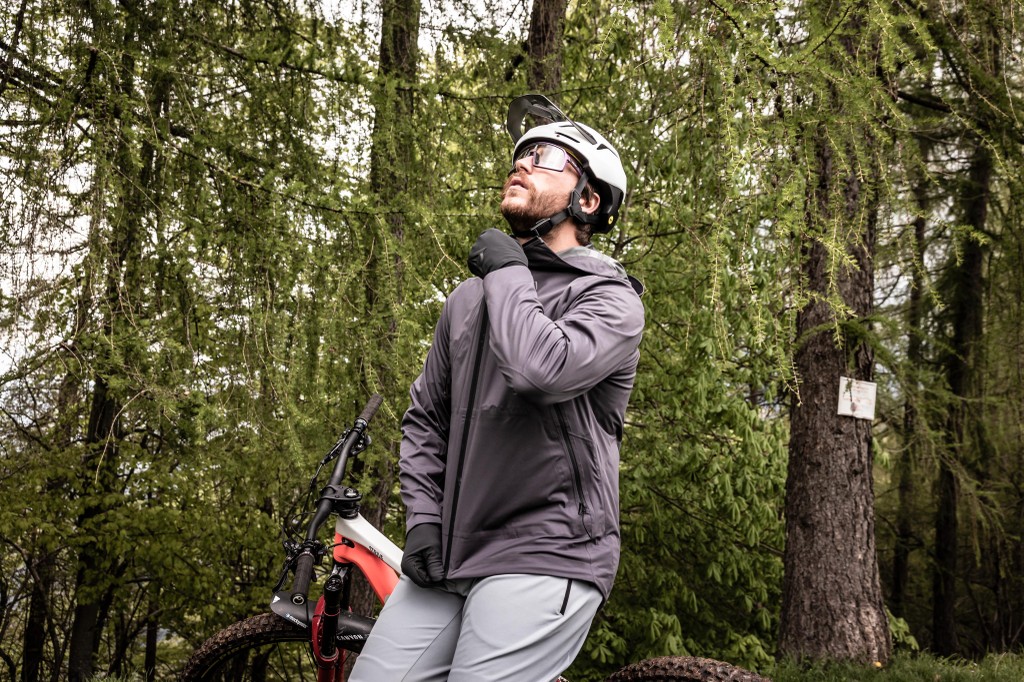Mud, snow, ice, dirt, water – if you like adventure, you can’t help but love mountain biking. Riding a mountain bike lets you face everything, obstacles and grueling trails, and of course every kind of weather. Sure, your bike can cope with anything... but how about you? Because, unlike a bicycle, riders need to be prepared specifically for every condition.
We’re clearly talking about protecting yourself from, in addition to impacts, atmospheric agents, preparation that mainly concerns the upper part of the body. So you need to choose the right MTB jacket. Legs tend to suffer the cold less because they’re effectively your ‘engine’, and they’ll never get truly cold even if they get wet. The chest and arms, on the other hand, yes – especially when pedaling, they are under less stress, so with speed and less than summery conditions, they can experience drastic drops in temperature.
Of course, all these factors need to be considered together with the fact that everyone knows whether their own bodies suffer more from the cold or heat. That’s another important element to consider when choosing the right MTB jacket. There are, however, some guidelines to follow, above all in extreme conditions like constant rain or particularly low temperatures.

As with any dynamic sport, there’s also specific MTB technical clothing. You have to make sure that the jacket you choose doesn’t only protect you against external agents but is also breathable, so you don’t get soaked in sweat after a few kilometers. Then, it has to properly cover all areas involved without hindering your freedom of movement.
MTB jackets usually have a shorter cut on the front and longer on the back, to adapt to the saddle position without creasing on the front or leaving your backside uncovered. The most practical technical garments also offer the possibility of folding up easily, so you can remove them if it gets hotter and carry them in a pouch or backpack.
Finally, consider the option of wearing protectors under your jacket. They take up space – bear it in mind when you choose a size. Of course, men and women have different physiques and shapes. That’s why at Dainese we’ve designed dedicated lines for both, each with a dedicated fit.
Now let’s review which MTB jackets are ideal for each weather situation, in particular:
Having cleared up these essentials, we can divide MTB jackets according to the climate they’re made to tackle. If you plan on often going out in low temperatures, maybe fog, you should consider an insulated jacket that resists persistent moisture. The outer material will keep you dry, while inside a light layer of padding will preserve body heat.
In any case, they’re breathable, leaving your chest and arms dry at all times. If the technical fabric isn’t enough, some jackets also have extractors, which can be opened with a zipper. If you have to face the rain, then make sure there’s a hood (which you need to be able to wear over the helmet). If you have these needs, you might be interested in the HGC Loft, ideal even for subzero temperatures.
Going down a step on the difficulty scale, we come to MTB jackets that are good for rain but not padded, for temperatures that aren’t cold. That’s a situation than can prove incredibly helpful for improving your riding technique, but it needs to be handled with the right protection.
Even if temperatures aren’t a problem, you still need to stay dry. You need a jacket with a waterproof membrane, actually a layer dotted with tiny holes, large enough to expel the warm, moist air created by the body but not enough to let raindrops through. Air vents are even more important on this kind of jacket, because they’re used at higher temperatures on average. In addition to being waterproof, the garment has to be well ventilated (bear in mind that you’ll sweat even more on long uphill stretches). Versatile and lightweight, this type of jacket is also easy to fold. For example, you could take a look at the HGC Shell, made with an elasticated waterproof membrane (perfect for supporting movement) and ideal in cool climates.
You may only be interested in absolutely dry days, whatever the temperature. In that case, your MTB jacket’s waterproofing isn’t a priority. It does, however, have to protect your chest from cold air while keeping your body dry at all times. In other words, you need a windproof and breathable shell and an insulating inner layer. If that’s you, check out the HGC Hybrid.
But let’s say you only use your mountain bike when the thermometer reads more than 10–15 °C and there isn’t a cloud in the sky. We recommend that you wear something over your shirt anyway, to protect your chest and abdomen but leave your arms and armpits free for optimal heat dispersion even at low speed.
An MTB vest like the HGC Hybrid Vest is ideal (it can also be worn under another jacket to increase protection from the cold).
Whether you like riding in extreme conditions or only mild weather doesn't matter – the upper body always needs to be protected and at the same time allowed to breathe. There’s the right garment to match the climate you encounter, in men’s or women’s versions. Choosing it is up to you.